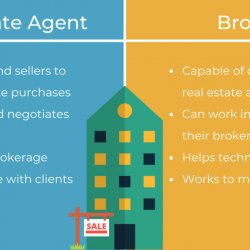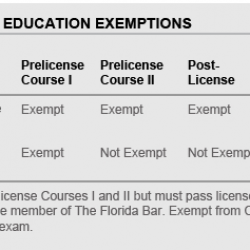what is wholesaling real estate can be fun for anyone

The factor most lenders need a 20% deposit is due to equity. If you don't have high adequate equity in the home, you're considered a possible default liability. In simpler terms, you represent more threat to your lender when you don't pay for enough of the house. PMI is calculated as a portion of your original loan amount and can range from 0. 3% to 1. 5% depending on your deposit and credit rating. Once you reach at least 20% equity, you can ask for to stop paying PMI.Homeowners association (HOA) charges are common when you purchase a condominium or a house that becomes part of a planned community.

The fees cover typical charges, such as community space maintenance (such as the grass, neighborhood swimming pool or other shared amenities) and building maintenance. When you're taking a look at residential or commercial properties, HOA fees are typically divulged upfront, so you can see how much the existing owners pay monthly or each year. HOA costs are an additional continuous cost to compete with, they don't cover home taxes or homeowners insurance coverage in many cases. Pick a long loan term, Purchase a less pricey home, Pay a larger down payment, Discover the most affordable interest rate readily available to you, You can expect a smaller sized costs if you increase the number of years you're paying the home mortgage.
For instance, a 15-year home mortgage will have greater monthly payments than a 30-year home mortgage loan, because you're paying the loan off in a compressed quantity of time. An apparent however still crucial route to a lower regular monthly payment is to purchase a more budget-friendly house. The greater the house rate, the higher your monthly payments. This ties into PMI. If you don't have sufficient conserved for a 20% deposit, you're going to pay more each month to protect the loan. Purchasing a home for a lower rate or waiting until you have bigger down payment savings are 2 ways to save you from larger regular monthly payments.
You do not have to accept the first terms you get from a loan provider. Attempt shopping around with other loan providers to discover a lower rate and keep your regular monthly mortgage payments as low as possible. If you have an FHA loan, the PMI sticks with you throughout the remainder of the loan. The only method to get out of it is to re-finance, which is another process in and of itself. If you have a conventional loan, the PMI will burn as soon as you reach 20% LTV, but that will typically take 7-10 years. There are a few ways to leave paying PMI. Put 20% down Find a portfolio lender: Portfolio lenders are those that keep their loans by themselves books. To put it simply, they don't sell their loans to Fannie or Freddie, so they have the ability to be more flexible.
Little Known Questions About How Much Does A Real Estate Agent Cost.
While you might not pay PMI, your rate of interest might be higher, which may not eventually make a big effect on your month-to-month payment. 80/10/10 agreement: Some lenders will offer an 80/10/10 contract. With this technique, you take out your typical 80% loan that would prevent PMI entirely (Which combines google maps with real estate data). You then secure an additional timeshare documentary loan for 10%, and after that you just put 10% down yourself. This can be dangerous because that additional 10% loan may have crazy terms, including balloon payments, adjustable rates of interest, and so on. Have a look at this short article to find out more about PMI.
Home mortgage Insurance coverage (also referred to as home loan warranty and home-loan insurance coverage) is an insurance coverage which compensates lending institutions or financiers for losses due to the default of a mortgage. Mortgage insurance can be either public or private relying on the insurance company. The policy is likewise referred to as a mortgage indemnity assurance (MIG), especially in the UK. In Australia, debtors should pay Lenders Home mortgage Insurance (LMI) for mortgage over 80% of the purchase price. [] In Singapore, it is compulsory for owners of HDB flats to have a home loan insurance coverage if they are utilizing the balance in their Main Provident Fund (CPF) accounts to pay for the regular monthly installation on their home loan.

Private mortgage insurance coverage, or PMI, is generally required with many standard (non federal government backed) home loan programs when the down payment or equity position is less than https://www.bintelligence.com/blog/2020/4/20/52-names-leading-the-way-in-customer-service 20% of the home worth. To put it simply, when acquiring or refinancing a house with a standard mortgage, if the loan-to-value (LTV) is higher than 80% (or equivalently, the equity position is less than 20%), the debtor will likely be required to carry private home mortgage insurance coverage. PMI rates can vary from 0. 14% to 2. 24% of the principal balance each year based on percent of the loan guaranteed, LTV, a fixed or variable interest rate structure, and credit report.
Most people pay PMI in 12 regular monthly installations as part of the home mortgage payment. In the United States, PMI payments by the borrower were tax-deductible till 2018. Borrower paid personal mortgage insurance coverage, or BPMI, is the most typical type of PMI in today's home mortgage loaning marketplace. BPMI enables debtors to acquire a home mortgage without having to supply 20% deposit, by covering the loan provider for the included threat of a high loan-to-value (LTV) home loan. The United States Homeowners Protection Act of 1998 permits debtors to request PMI cancellation when the amount owed is minimized to a specific level. The Act requires cancellation of borrower-paid mortgage insurance coverage when stop paying timeshare maintenance fees a certain date is reached.
Some Known Factual Statements About How To Get A Real Estate License In Oregon
BPMI can, under specific scenarios, be cancelled previously by the servicer ordering a brand-new appraisal revealing that the loan balance is less than 80% of the house's worth due to appreciation. This usually requires a minimum of 2 years of on-time payments. How much is a real estate license. Each investor's LTV requirements for PMI cancellation differ based upon the age of the loan and existing or original tenancy of the home. While the Act uses only to single household primary houses at closing, the investors Fannie Mae and Freddie Mac allow home loan servicers to follow the very same guidelines for secondary houses. Investment residential or commercial properties normally require lower LTVs.
Sometimes, the Loan provider is offering the customer a credit to cover the expense of BPMI. Lending institution paid personal home loan insurance coverage, or LPMI, is comparable to BPMI other than that it is paid by the lender and developed into the rate of interest of the home mortgage. LPMI is usually a feature of loans that claim not to need Mortgage Insurance for high LTV loans. The advantage of LPMI is that the total regular monthly home loan payment is frequently lower than a similar loan with BPMI, however because it's developed into the interest rate, a customer can't get rid of it when the equity position reaches 20% without refinancing.
In home mortgage insurance, a master policy issued to a bank or other mortgage-holding entity (the policyholder) lays out the terms of the protection under insurance coverage certificates. The certificates record the specific characteristics and conditions of each individual loan. The master policy consists of various conditions including exclusions (conditions for rejecting protection), conditions for notice of loans in default, and claims settlement. The legal provisions in the master policy have gotten increased scrutiny since the subprime mortgage crisis in the United States. Master policies normally need timely notice of default include provisions on month-to-month reports, time to submit suit restrictions, arbitration contracts, and exemptions for neglect, misstatement, and other conditions such as pre-existing environmental pollutants.
Protection can be rescinded if misstatement or fraud exists. In 2009, the United States District Court for the Central District of California figured out that home loan insurance might not be rescinded "poolwide". Home loan insurance coverage started in the United States in the 1880s, and the first law on it was passed in New york city in 1904. The market grew in reaction to the 1920s realty bubble and was "totally bankrupted" after the Great Depression. By 1933, no private mortgage insurance companies existed.:15 The personal bankruptcy was related to the industry's involvement in "home mortgage pools", an early practice comparable to home mortgage securitization. The federal government began insuring home mortgages in 1934 through the Federal Housing Administration and Veteran's Administration, however after the Great Anxiety no private home mortgage insurance coverage was licensed in the United States until 1956, when Wisconsin passed a law enabling the first post-Depression insurer, Mortgage Warranty Insurance Coverage Corporation (MGIC), to be chartered.





Ingen kommentarer endnu